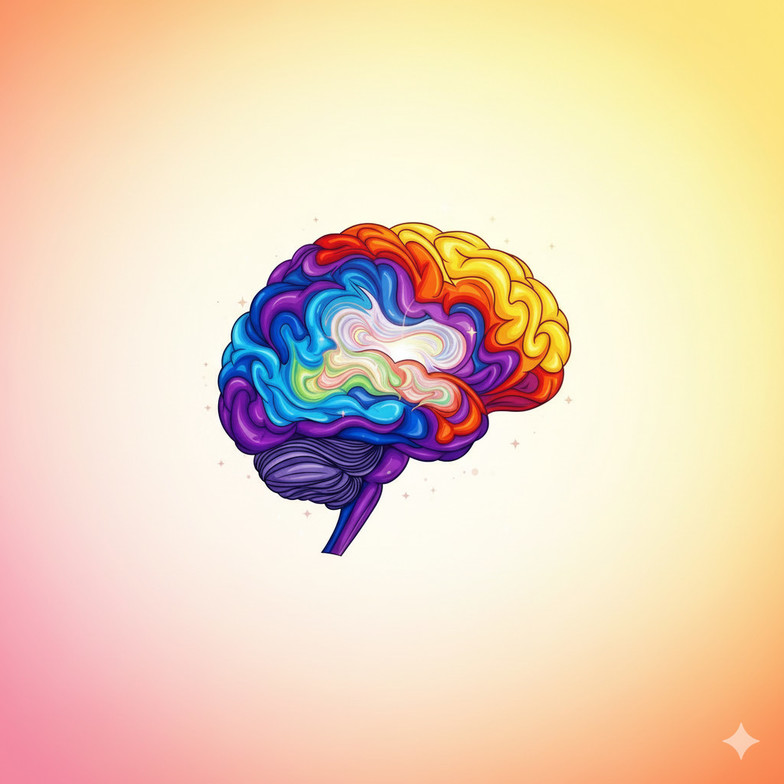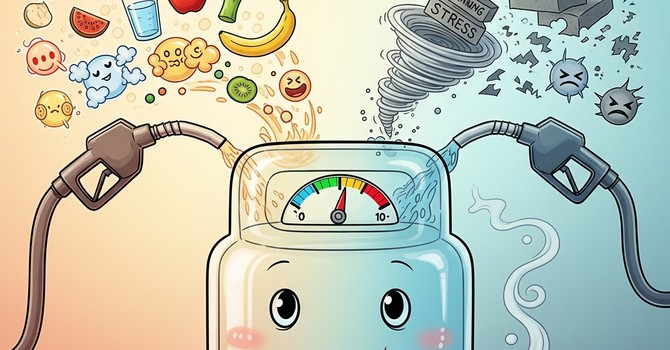
Neurodiversity, ADHD, and Autism are part of a vital global conversation about mental health. If you've been part of these discussions, you may be wondering how this new understanding can impact your own life. The truth is, learning to understand your unique brain is a profoundly self-loving act that can unlock a new level of self-worth.
What Does "Neurodivergent" Really Mean?
Often, the word "neurodivergent" brings autism or ADHD to mind. While they are key examples, the term is much broader: it encompasses all brains that diverge from the neurological norm. It's a recognition of the vast spectrum of human brain wiring, which results in unique experiences, strengths, and challenges.
This shift in perspective is crucial. It helps us move from asking, "What's wrong with me?" to "How does my brain work, and how can I best support its needs?" Your brain isn't broken; it's wired differently, and that difference is valuable.
Neuro-Affirmative Therapy: A New Kind of Support
Have traditional therapy models missed the mark for you? It might be because they are often built on a neurotypical framework. Neuro-affirmative therapy is different. It's designed with neurodivergence in mind, focusing on:
-
Understanding Your Brain's Operating System: Rather than trying to "fix" traits, this approach examines how your brain functions. Sensory sensitivities, unique communication styles, and executive function differences are not seen as flaws, but as inherent parts of your neurological makeup.
-
True Collaboration: Therapy becomes a partnership. Your therapist works with you, adapting the environment and communication to fit your style, creating a safe space where you feel truly seen and understood.
-
Shifting from Pathology to Strengths: Neuro-affirmative therapy highlights the incredible strengths that often accompany neurodivergent brains—from unique perspectives and deep analytical skills to intense focus, creativity, and profound empathy.
-
Unlearning Internalized Ableism: Many neurodivergent individuals internalize societal messages that their way of being is "wrong." Therapy helps unpack these harmful beliefs, fostering radical self-acceptance.
-
Practical, Tailored Strategies: This approach moves beyond talk therapy to help you develop customized coping mechanisms for sensory overload, routines that support executive function, and communication skills that honour your authentic self.
Navigating Common Struggles in a Neurotypical World
Living in a world not built for your brain can be challenging. Therapy offers a space to work through specific struggles, such as:
-
The "Something's Wrong With Me" Narrative: Dismantle this deeply ingrained belief by recognizing your brain isn't broken, just different.
-
Misunderstanding Your Own Needs: Learn about your unique "operating system" to develop strategies that work with your natural inclinations, not against them.
-
Sensory Overload: Develop personalized coping mechanisms and environmental adjustments to manage sensory input and foster a sense of control.
-
Navigating Traditional Environments: Build practical skills for school, work, or social settings, including communication strategies, supportive routines, and advocating for your needs.
-
Grieving "What Ifs": Process the sense of loss for the life you thought you were "supposed to have," transforming past pain into a foundation for self-compassion.
Powerful Coping Strategies You Can Use Today
Beyond therapy, these powerful strategies can make a world of difference:
-
Know Your Brain's User Manual: If loud environments are overwhelming, use noise-cancelling headphones. It's not about avoiding life, but navigating it in a way that respects your wiring.
-
Build a Personalized Toolkit: Use tools that empower you. Visual schedules, task-batching, and time-management apps can be game-changers for executive function challenges.
-
Embrace Your Authentic Self: Notice when you are masking (camouflaging your traits). Allowing yourself to stim, honouring your environmental sensitivities, and communicating authentically are powerful acts of self-acceptance.
-
Harness Your Strengths: Lean into your intense interests or "hyperfixations." Your unique passions can lead to incredible joy, focus, and unexpected opportunities.
-
Prioritize Sensory Self-Care: After a stimulating day, retreat to a quiet space, use a weighted blanket, or listen to calming music. This isn't an indulgence; it's vital for recharging your system.
The Journey of Masking and Unmasking
Many neurodivergent people learn to mask their traits to fit in—a survival mechanism that is both effective and exhausting. After a diagnosis, the journey of "unmasking" can be liberating but also daunting. Therapy can provide a safe space to:
-
Recognize masking as a survival tool, not a personal failing.
-
Identify and challenge the internalized ableism that makes you feel you need to hide.
-
Explore authentic self-expression and reclaim hidden parts of yourself.
-
Find a healthy balance between being authentic and navigating a world that may not always understand.
-
Process the grief for the years spent hiding and move forward with self-compassion.
-
Build a community where you feel seen, valued, and free to be yourself.
Understanding and Coping with Overwhelm: Meltdowns, Shutdowns, and Burnout
It is critical to understand that meltdowns, shutdowns, and burnout are involuntary neurological responses to overwhelm—they are not choices or tantrums.
-
Meltdowns: An externalized expression of the nervous system hitting its limit. This can look like crying, yelling, or pacing, but it is a signal of profound internal distress.
-
Shutdowns: An internalized response where the nervous system withdraws inward. A person might become quiet, passive, or non-verbal. This is just as intense as a meltdown.
-
Autistic Burnout: A state of profound exhaustion, loss of skills, and social withdrawal resulting from the constant effort of navigating a neurotypical world. It can last for weeks, months, or even years.
These states are often triggered by sensory overload, social stress, executive dysfunction, and the chronic effort of masking. The good news is that you can develop powerful strategies to prevent and recover from these experiences.
-
Modify Your Environment: Proactively reduce sensory input by adjusting lighting, using earplugs, and creating quiet, low-stimulation spaces for recovery.
-
Prioritize Predictability: Use visual schedules, timers, and clear warnings before transitions to reduce cognitive strain. Clearly communicate your needs, such as requesting breaks or written instructions, to ensure effective collaboration and ensure that your expectations are met.
-
Use Self-Regulation Tools: Identify what soothes your nervous system. This could be deep pressure from a weighted blanket, stimming with a fidget toy, or rhythmic motion.
-
Embrace a Recovery Mindset: To heal from burnout, you must fundamentally reduce your load. This means dropping non-essential responsibilities, extending timelines, and radically prioritizing rest to allow your nervous system to rebuild.
Your Brain is a Marvel
The core message through all of this is simple: your brain is a marvel. Understanding its unique architecture and embracing your place in a neurodiverse world builds a foundation of compassion for yourself and others. It allows us to move away from judgment and toward curiosity, acceptance, and a deeper appreciation for the rich tapestry of the human experience.
Accepting your neurodiversity is an act of profound self-love. Finding support that honours your unique brain is a powerful step toward claiming your self-worth and building a life where you can truly thrive.
Stay Curious



.png)